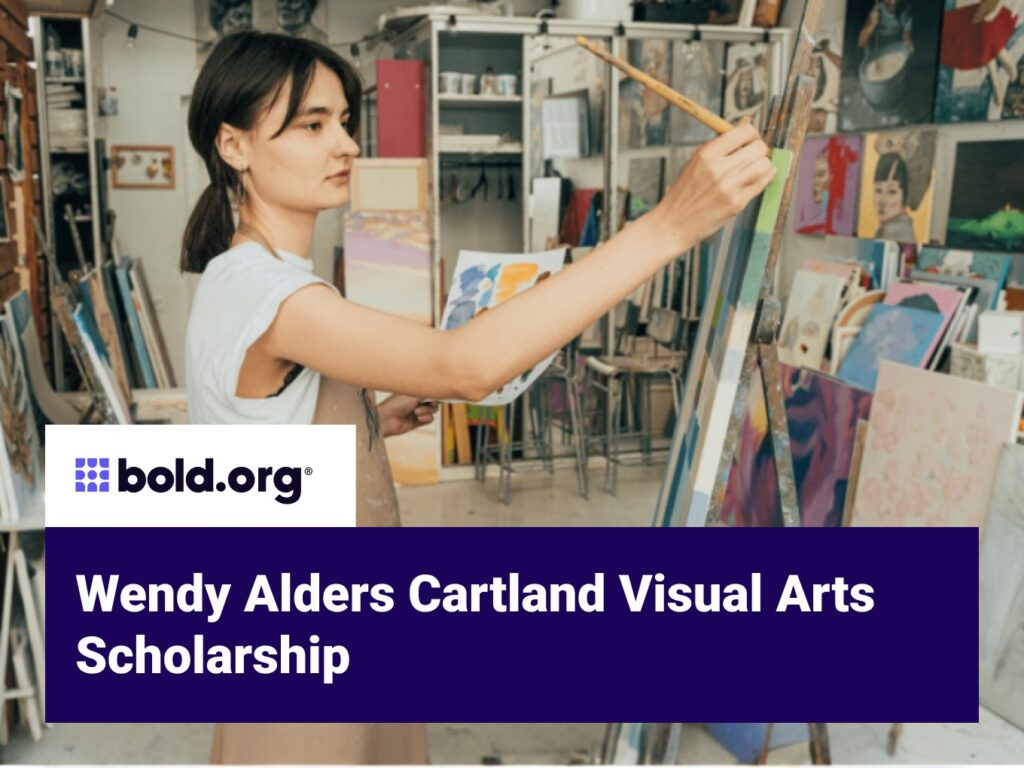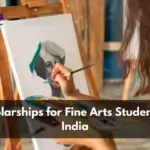I remember standing in my studio, paint smears on my jeans, the smell of turpentine a familiar comfort, looking at the finished piece on the easel. It was good, I thought, really good. But then a different kind of canvas loomed in my mind: the vast, daunting landscape of higher education and its equally vast, daunting price tag. Art school. My dream. But how was I going to afford it? That question felt heavier than any block of marble I’d ever worked with. This wasn’t just about paint and brushes; it was about opening doors, about finding a path to turn a passion into a life. And for so many of us, especially in the visual arts, those doors often feel guarded by a toll booth that asks for more than we could ever imagine. That’s where scholarships come in, not just as financial lifelines, but as powerful affirmations of your talent and dedication.
My own journey into understanding visual arts scholarships felt a bit like stumbling into a forgotten wing of a grand museum – overwhelming at first, but filled with unexpected treasures once I knew where to look. I learned that applying for these scholarships isn’t just about showing your best work; it’s about telling your story, articulating your vision, and proving that you’re not just capable, but deserving. It’s a holistic process, often requiring as much creativity and persistence as creating a masterpiece itself.
Let’s talk about why these scholarships aren’t just about money, although that’s certainly a huge part of it. When you earn a visual arts scholarship, especially one tied to your artistic merit, it’s a profound validation. It’s someone, usually a panel of experienced artists or educators, looking at your work and saying, "We see something special in you. We believe in your potential." That kind of belief can fuel an artist for years, giving them the confidence to push boundaries and take risks. Beyond the validation, these scholarships often open doors to networks, mentorships, and opportunities you might never encounter otherwise. They free you from some of the financial burden, allowing you to immerse yourself more fully in your studies, to experiment without the constant gnawing worry about tuition bills. For an artist, time and mental space are precious commodities, and scholarships can buy you both.
Now, the world of scholarships might seem like a tangled mess of forms and deadlines, but it’s actually quite structured once you start peeling back the layers. Generally, you’ll encounter two big categories: need-based and merit-based. Need-based scholarships, as the name suggests, are given to students who demonstrate a financial need to attend school. Your family’s income and assets play a big role here, and you’ll usually fill out a form like the FAFSA (Free Application for Federal Student Aid) in the US, or similar forms in other countries, to determine your eligibility. Merit-based scholarships, on the other hand, are awarded based on your achievements – and for visual arts, that almost always means your portfolio. This is where your artistic talent, your unique perspective, and your dedication shine through. Some scholarships blend these two, considering both your financial situation and your artistic strengths.
Within the merit-based category, many are specifically portfolio-based. This means your artwork itself is your primary advocate. Schools and organizations want to see what you can do, how you think, and what you’re passionate about. There are scholarships for specific art forms too: painting scholarships, sculpture scholarships, digital arts scholarships, graphic design scholarships, illustration scholarships, photography scholarships, even mixed media or conceptual art scholarships. It’s worth digging deep to find those niche opportunities, as they often have smaller applicant pools.
Then there’s the question of who offers these scholarships. Many colleges and universities offer their own institutional scholarships, often tied to your application for admission. When you apply to an art school or a university with a strong art program, you’re often automatically considered for some of these, especially if you submit a strong portfolio. Beyond the schools themselves, there are external scholarships. These come from all sorts of places: foundations dedicated to supporting the arts, corporations with an interest in design or creativity, professional art organizations, local community groups, even individual benefactors. These external scholarships require a bit more legwork to find, but they can be incredibly rewarding because they often don’t affect your institutional financial aid package.
So, how do you actually find these elusive opportunities? It begins with good old-fashioned research, and a lot of it. Think of it like a treasure hunt. Start with the schools you’re interested in. Their financial aid and art department websites are goldmines of information. Look for sections specifically about scholarships for visual arts students. Don’t be shy about calling or emailing the admissions or financial aid offices; they’re there to help you. Beyond the schools, general scholarship search engines like Fastweb, Scholarship.com, or Chegg can be helpful, but be prepared to filter. The trick for visual arts is to use very specific keywords: "visual arts scholarships," "art school funding," "fine art grants," "design scholarships," "portfolio awards." Also, look locally. Your town’s Rotary Club, Lions Club, or local arts council might offer scholarships for students from your area. Sometimes these are less competitive simply because fewer people know about them.
Once you’ve found a few promising leads, the real work begins: the application itself. And for a visual artist, the centerpiece of almost every application is the portfolio. This isn’t just a collection of your work; it’s a curated narrative of your artistic journey and potential. What makes a good portfolio? First, quality over quantity. Don’t include everything you’ve ever made. Select your strongest pieces, typically 10-20, that showcase your technical skills, your understanding of composition, color, form, and most importantly, your unique voice. Admissions committees want to see originality. They want to see how you think. Show variety if you have it – don’t just include ten still lifes if you also excel at abstract painting or digital illustration. Show different mediums, different approaches.
Crucially, show your process. Sometimes, including sketchbook pages, preliminary drawings, or even photos of your work in progress can be incredibly insightful for a reviewer. It demonstrates your critical thinking, your problem-solving abilities, and your dedication to your craft. When preparing your portfolio digitally, make sure your images are high-resolution, well-lit, and accurately represent your work. If it’s a sculpture, take multiple angles. If it’s performance art, a short video clip is essential. Always double-check the submission requirements for each scholarship; some prefer specific file types, image sizes, or even online platforms like SlideRoom. And here’s a tip I learned the hard way: get feedback. Ask a trusted art teacher, a mentor, or even an artist you admire to review your portfolio before you submit it. Their fresh perspective can reveal weaknesses or highlight strengths you might have overlooked.
Beyond the portfolio, most applications will require an essay or personal statement. This is your chance to connect with the scholarship committee on a deeper, more personal level. Don’t just list your achievements; tell your story. Why art? What sparked your passion? What themes or ideas do you explore in your work? What do you hope to achieve with an art education? Be authentic. Let your personality shine through. If you write about a specific piece in your portfolio, explain its significance to you. This isn’t the time for generic platitudes about "changing the world through art" unless you have a truly compelling, specific vision to back it up. I remember writing about how the texture of old wood inspired my sculpture, tying it back to my childhood spent in my grandfather’s workshop. That specificity made it real. And please, please, proofread. Typos and grammatical errors can undermine even the most heartfelt statement.
Letters of recommendation are another vital component. Choose people who know your artistic abilities and character well – art teachers, mentors, gallery owners you’ve worked with. Ask them well in advance, giving them plenty of time. Provide them with everything they need: a list of the scholarships you’re applying for, their deadlines, your resume, your personal statement, and a brief explanation of why you’re applying. Make it easy for them to write a strong, detailed letter on your behalf. A generic letter is far less impactful than one that speaks to your specific talents and drive.
Finally, don’t forget your resume or CV. For an artist, this might include any exhibitions you’ve participated in, awards you’ve won, art-related volunteer work, workshops you’ve attended, or even commissions you’ve completed. Even if you’re just starting out, list anything that shows your engagement with the art world.
Along the way, I made some mistakes, and I saw others make them too. The most common one? Missing deadlines. Mark every single deadline on a calendar, set reminders, and aim to submit at least a few days early. Technology can be fickle, and you don’t want a last-minute internet glitch to derail your chances. Another common pitfall is submitting a generic application. Each scholarship is unique, and your application should reflect that. Tailor your essay, and even your portfolio selection, to the specific values or focus of the scholarship provider. If a scholarship emphasizes community engagement, highlight any art projects you’ve done for your community. If it’s for digital artists, ensure your portfolio heavily features your digital work.
And then there’s the waiting game. Oh, the waiting! It can be agonizing. You’ve poured your heart and soul into these applications, and now you’re just… waiting. Be prepared for rejections. Everyone gets them. They sting, no doubt, but they’re not a reflection of your worth as an artist. They’re simply a part of the process. Learn from them if you can, but don’t let them deter you. Keep applying. Keep creating. The right opportunity will come along if you persist. And when an acceptance letter or an award notification finally arrives – that feeling is pure magic. It’s the culmination of all that hard work, the confirmation that someone out there believes in your vision.
Securing a scholarship isn’t the end of the journey; it’s just a beautiful beginning. It’s a responsibility, too. Use the opportunity wisely. Immerse yourself in your studies, push your creative boundaries, and make the most of the resources available to you. Remember that the scholarship committee invested in you, and your continued dedication is the best way to honor that investment.
For those moments when scholarships feel out of reach, remember there are other avenues. Grants, especially project-based ones, can fund specific artistic endeavors. Crowdfunding platforms can rally support from your community. Part-time jobs, even if they’re not art-related, can help bridge financial gaps. And while student loans exist, always consider them a last resort after exhausting all scholarship and grant possibilities.
My journey through the scholarship landscape taught me more than just how to fill out forms; it taught me resilience, the importance of self-advocacy, and the power of a well-told story. It reminded me that art isn’t just about what you make, but about who you are and what you stand for. So, if you’re standing in your studio, looking at your work, and wondering how you’ll afford the next step, take heart. The opportunities are out there, waiting for you to find them. Gather your best work, craft your story with passion, and cast your net wide. The art world needs your unique voice, and there are people ready to help you amplify it. You just have to be brave enough to ask, and persistent enough to keep trying. Your canvas of opportunity awaits your brushstrokes.



